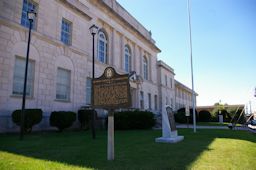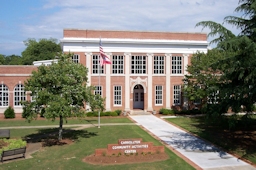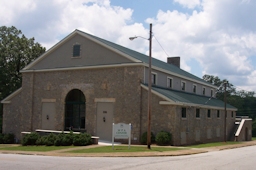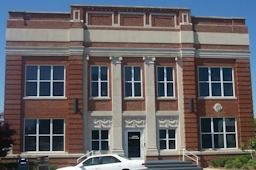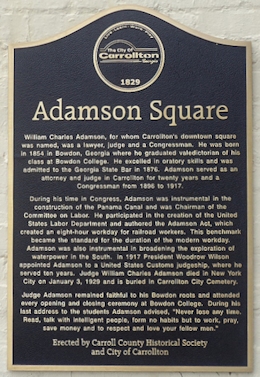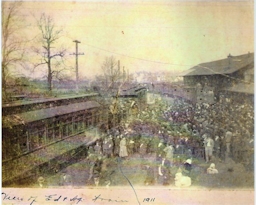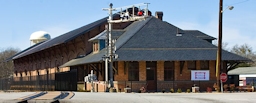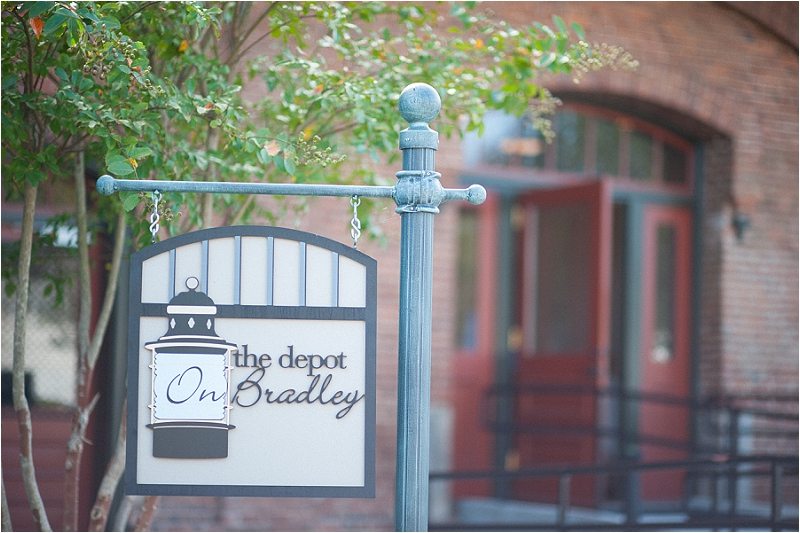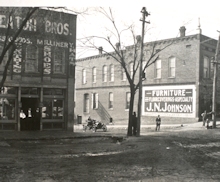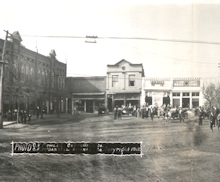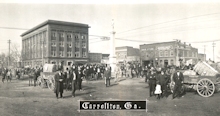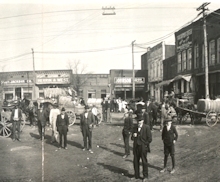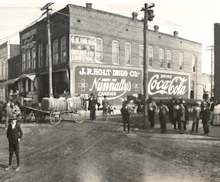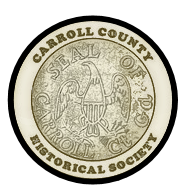Carrollton Old City Gym
The Old City Gym is located at the Carrollton City Park on U.S. 27 (South Park St.). It was built in the 1940 by the Work Progress Administration (WPA). Once used for basketball games and community dances, it continues to be a place for community gatherings and class reunions. It is now called the WPA building.
Carrollton Old City Hall
This is another Neel Reid designed building in Carrollton. Besides once being home to the city government of Carrollton, it has housed the cities fire and police departments. In its early years, the upper floors were used as the Carrollton Opera House and later as the City Auditorium. Today the Southwire Company has sales offices here.
Carrollton Downtown Historic District
Historic Downtown Carrollton is the county seat of Carroll County and was founded in 1827 when it was moved from the former site of old Carrollton near Sandhill to be nearer the center of the county. It was named for the estate of Charles Carroll of Carrollton, Maryland.
This wild west-like town was once a center for cotton trading with several textile mills located in the city.
Carrollton has supported the downtown Adamson Square restoration and revitalization and other restoration projects in the area. The Carrollton Downtown Historic District was placed on the National Historic Register in 2007.
Carrollton Train Depot
In 1852, the Carrollton Rail Company was chartered with hopes of bringing a railroad line to Georgia’s western frontier, but the Civil War halted further progress of those dreams. By 1872, the Central of Georgia Railway Company completed a line from Savannah, through Griffin, to Newnan. However, in 1873, while grading the road west of the Chattahoochee River a layer of rock was encountered and the small railroad town of Whitesburg sprang up causing many in Carrollton to go there to use the railroad. It was not until 1874 that the first train finally rolled into town and the town’s population doubled its 1871 figures causing many of those who had left to return.
At first four passenger trains a day chugged in and out of the depot. Leaving at five in the morning, one could change in Bremen for Atlanta, spend a day in the capitol and return by eight. As guano and other fertilizers became easily available by rail, Carroll County farmers increased cotton production, and Carrollton became the cotton market for a wide area of west Georgia and eastern Alabama.
Once the Reconstruction Period of the War Between the States had ended, construction of a depot in Carrollton finally began to take place. In 1881, the Central of Georgia constructed a freight depot in Carrollton that was 171 ft. long by 36 ft wide - one of the largest of the Central’s emerging railroad style depots. That same year the Rome and Carrollton Railroad was chartered in Rome to form a link north to Tennessee along the Georgia-Alabama state line. The laying of tracks began on the Cedartown section in 1885, and a celebration of its completion was held in July 1888 at the Carrollton Depot. This company was later renamed the Chattanooga, Rome and Columbus Railroad.
Although several early railroad lines were chartered with hopes of extending beyond Carrollton into North Alabama and further south to Columbus, Carrollton was essentially the western terminus at the end of the line.
Carrolltons ca. 1875 Central of Georgia Railway depot stands on Bradley Street about three blocks south of the city square. Once threatened with demolition by Norfolk Southern, the building was acquired by the City so that it could be saved for community use. The rehabilitation work was done from 2010 to 2013. The Depot on Bradley was opened to the public in January of 2013 after an extended renovation period this 1880s brick structure contains two main areas: The Ticketing Booth and The Grand Hall. The Ticketing Booth area is slated to house both Carrollton and Railroad memorabilia while the Grand Hall is available for event rentals. The Grand Hall is a 5,000 square foot facility that is perfect for weddings, receptions, fundraisers, banquets and dances.
